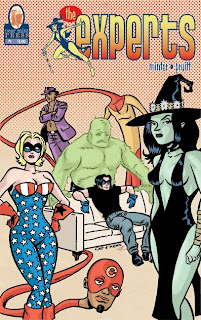
The question for neuroscience is how nervous systems generate behaviour and cognition. In general, we think there’s a hierachical command scheme, as the quick and dirty sketch below shows.
It’s been hard to move from general principles and “black boxes” to real neurons. A good chunk of effort in neuroethology has gone into understanding the sensory capabilities of different animals, and cracking how pattern generators could generate the detailed plan for movements, especially rhythmic behaviours. Research on command neurons, though, has focused on neurons that generate simple behaviours that are
strongly stimulus driven, like
escape responses. But many behaviours are far more... subtle. Behaviour is often spontaneous, and no clear stimulus is visible to an external observer.
Ideally, to understand the linkages I showed above, you’d want to record from all those different layers simultaneously: you’d want to know what the neurons are doing while you are simultaneously recording behaviour. Command neurons are involved tend to be located deep in the animal, so it is hard to locate and record from them in a way where there is enough animal left to behave. Jim Larimer and colleagues published a series of nice articles back in the 1970s showing that such neurons existed in crayfish, and reliably stimulated certain behaviours, like walking (Bowerman and Larimer 1974a, b).
Invertebrate locomotion has been very influential in influencing our understanding of motor control. During grad school, I was heavily reading papers on crustacean walking. That line of research seems to have slowed a bit since then, but this paper by Kagaya and Takahata is an amazing update to the field. I am, quite frankly, in awe of its technical prowess.

Kagaya and Takahata must have spent a very long time troubleshooting these experiments. Using
Louisiana red swamp crayfish, they were able to record from neurons heading from the brain to the thorax (where the legs are attached and controlled)
and stimulate them, record key leg muscles involved in walking, and record the final behaviour, the trajectory and speed of the crayfish walking.
The authors recorded from several kinds of neurons running from the brain toward the thorax that had interesting influences on walking. Perhaps the most interesting were the ones that started firing before any behaviour started, which they called the “readiness discharge.” They were also able to stimulate these neurons electrically, and show reasonably well that their stimulation would initiate walking.
Intuitively, you might expect that you would only need one neuron to initiate a particular behaviour, and it wouldn’t matter all that much whether the source feeding into that initiation was external or internal. But that's the fascinating thing is that the “readiness discharge” neurons were
not active when crayfish were “encouraged” to walk by touching them; reflexive walking was correlated with other neurons descending from the brain.
The “readiness discharge” neurons seemed to be involved only in
spontaneous walking, and not reflexive walking. And isn’t spontaneous behaviour the usual place where “free will” gets invoked to explain what happens in complex animals?
They also found a variety of other interesting neurons. They found neurons that seemed to stop walking. They found neurons that appeared to be involved in maintaining walking, including some neurons that would fire only when walking in a particular direction.
At this point, all we know about these cells is the firing patterns of their action potentials. And it’s very difficult to know how many neurons might be missed, or if perhaps these neurons are overcategorized. We don’t know anything about their anatomy in the brain or in the rest of the nervous system, how they might be modulated, or anything. But now that we know they’re there... maybe people will start to figure out some ways to track these down.
This is the kind of paper that you don’t see enough of: classic, hard-core neuroethology. But it’s tough going to read it. Having detailed physiological recordings at multiple levels means that the experiments defy easy summary. Consequently, this paper may be like jazz music: there may be more people who admire the technical virtuosity than there are people who “get it.”
References
Bowerman RF, Larimer JL. 1974b. Command fibres in the circumoesophageal connectives of crayfish II. Phasic fibres.
The Journal of Experimental Biology 60:119-134.
http://jeb.biologists.org/cgi/content/abstract/60/1/119
Kagaya K, Takahata M. 2010. Readiness discharge for spontaneous initiation of walking in crayfish
Journal of Neuroscience 30(4): 1348-1362. DOI:
10.1523/jneurosci.4885-09.2010
Kagaya, K., & Takahata, M. (2010). Readiness Discharge for Spontaneous Initiation of Walking in Crayfish Journal of Neuroscience, 30 (4), 1348-1362 DOI: 10.1523/JNEUROSCI.4885-09.2010
[Crossposted at
Marmorkrebs.]































